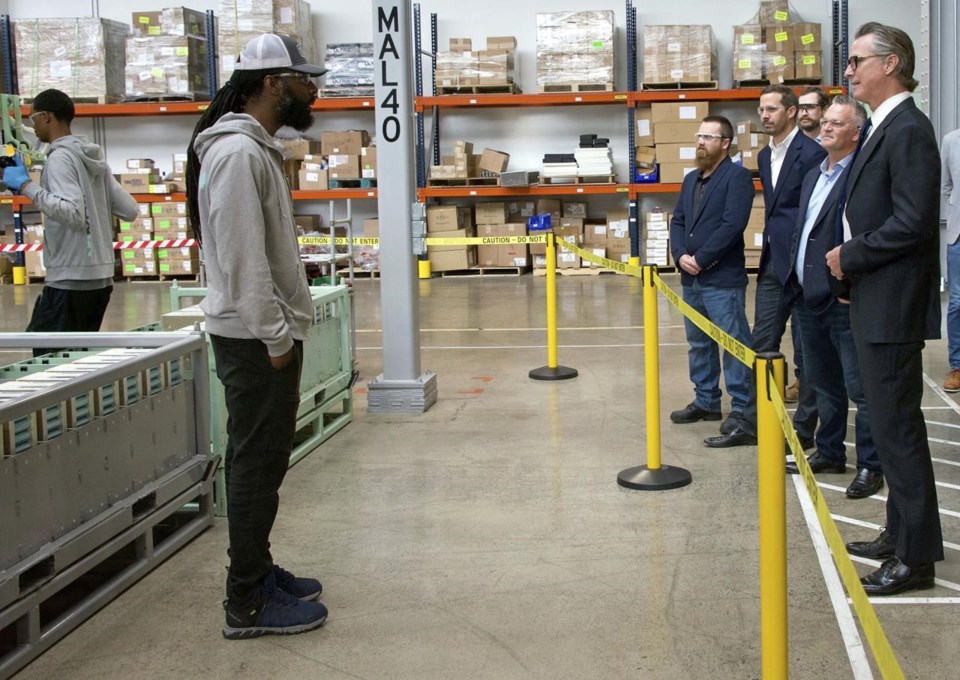RICHMOND, Calif. (AP) — California regulators say the state is unlikely to run out of electricity this summer because of a big increase in power storage and a that filled the state's reservoirs enough to restart hydroelectric power plants that were dormant during the drought.
The nation's most populous state normally has more than enough electricity to power the homes and businesses of more than 39 million people. But the electrical grid has trouble when it gets really hot and everyone turns on their air conditioners at the same time.
It got so hot in August 2020 that California's power grid was overwhelmed, prompting the state's three largest utility companies to for hundreds of thousands of homes for a few hours over two consecutive days. in 2021 and 2022 pushed the state to the brink again. State officials avoided blackouts by encouraging people to conserve energy and tapping some emergency gas-powered generators.
The state's electrical grid was strained in part because of a severe drought that left reservoirs at dangerously low levels, leaving little water available to pass through hydroelectric power plants. The water level in Lake Oroville got so low in 2021 state officials had to that was capable of powering 80,000 homes.
That won't be a problem this year after winter storms dumped massive amounts of rain and snow on the state. Plus, an additional 8,594 megawatts of power from wind, solar and battery storage will come online by Sept. 1, according to Neil Millar, vice president of Transmission Planning & Infrastructure Development for the California Independent System Operator.
One megawatt of electricity is enough to power about 750 homes.
“I am relieved to say that we are in a much better position than what we were going into 2022,” said Siva Gunda, vice chair of the California Energy Commission.
The struggle to power the state during severe heat waves has been a problem for Democratic Gov. Gavin Newsom, who has aggressively moved the state away from fossil fuels. California gets much of its power now from sources like wind and solar. But those power sources are not always available.
To avoid blackouts during heat waves, Newsom and the state Legislature spent $3.3 billion to create a “strategic reliability reserve." State officials used the money to extend the life of some gas-fired power plants that were scheduled to retire and to purchase large diesel-powered generators. Last September, when a severe heat wave pushed the statewide demand for electricity to an all-time high, this reserve generated up to 1,416 megawatts of energy.
The reserve helps keeps the lights on. But it also goes against the state's goal of having 100% clean energy by 2045. The state got 59% of its energy from non fossil-fuel sources in 2021, down from a high of 64% in 2019. State officials say the decrease is mostly because the drought reduced the amount of hydroelectric power available.
One way to use solar power is to store it during the day and use it at night. Gunda said California is on track to have about 5,000 megawatts of battery storage available by June 1, an increase from just 250 megawatts in 2019.
On Thursday, Newsom toured a battery manufacturing plant and touted his updated plan to .
“I think the most important thing is to reinforce is we can’t get it done unless we go big and bold. and we’ve got to address the barriers in our way,” Newsom said.
While officials say the state should avoid critical power shortages, they warn the weather could change things. to knock out key power transmission lines. Those things could still trigger a “flex alert" warning people to conserve energy.
“I would say that that folks shouldn’t be surprised to see a flex alert,” said Alice Reynolds, president of the California Public Utilities Commission. “I mean, we’re talking about extreme heat, unusual events that are hard to manage.”
Adam Beam, The Associated Press




